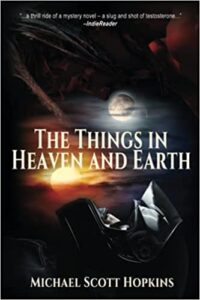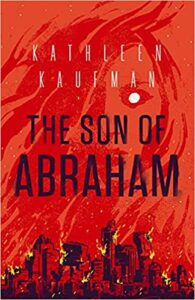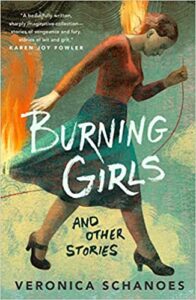The Things in Heaven and Earth by Michael Scott Hopkins
Black Rose Writing, 2021
ISBN: 9781684337118
Available: paperback, Kindle ( Bookshop.org | Amazon.com )
The Things in Heaven and Earth is a good read the first time around, but it may take another read in order to understand all the details; some of the early chapters make a lot more sense the second time through. That said, it’s still a good, imaginative take on the conflict between God and Satan (although those names aren’t really used) being played out through intermediaries on Earth.
Nash Baxter is a character with a convoluted life. He shot and killed his family as a child, became a personal injury lawyer, then quit to become a paranormal hoax-buster and best-selling author, and somehow he is the repository of some of Satan’s life force. If that isn’t enough, Nash can see real ghosts, and the demons that bind the ghosts to this plane of existence. Sound complicated? It is, both to the reader and to Nash. When explanations are provided, Nash has an engaging habit of telling characters to give it to him in plain English, instead of using metaphysical jargon. Some parts may still not make complete sense to the reader, but there’s enough to get the gist of it and follow the story.
As twisting as the plot is, it keeps you engaged through the uncertainty, to keep turning the pages to see where the story goes next. Nash is a good leading man, and you’ll find it easy to relate to his down to earth manner. He meets an assortment of odd companions along the way: his supposedly dead brother, a doctor who is granted mystical healing powers, real people with phantom personalities… quite the eclectic collection. Somehow, the story holds all of them, and threads together nicely, keeping the interest level high. The adversity faced by Nash and Co. is also unpredictable; a lightning bolt alone can provide three instant demon enemies for Nash and his friends. The reader won’t be sure who the antagonists are in the story until close to the end; the author does a good job painting both sides in mystery. Eventually, all becomes (mostly) clear, and the story wraps up nicely with a final confrontation between Nash and his enemies.
It’s a strange, convoluted tale, but it’s an entertaining one, although it might be a bit much for readers who like their fiction straightforward and easy to comprehend. If you want a story that veers all over the basepaths yet somehow still crosses home plate in style, The Things in Heaven and Earth is for you.
Reviewed by Murray Samuelson







Follow Us!